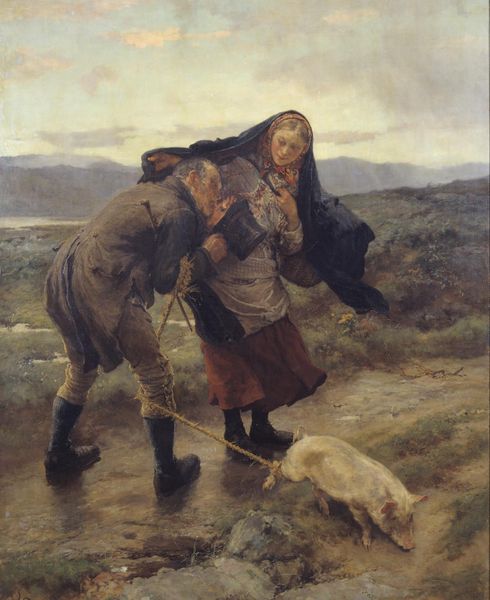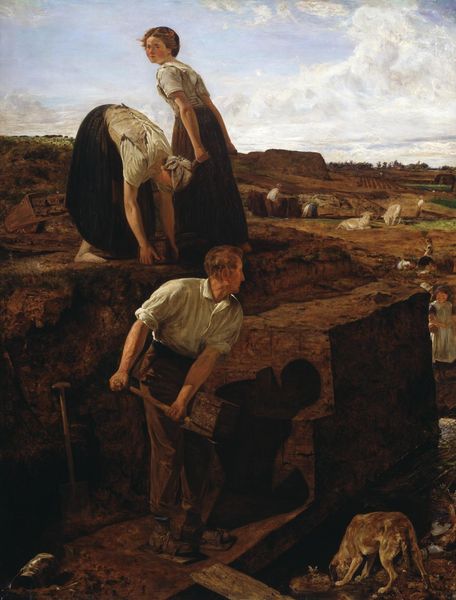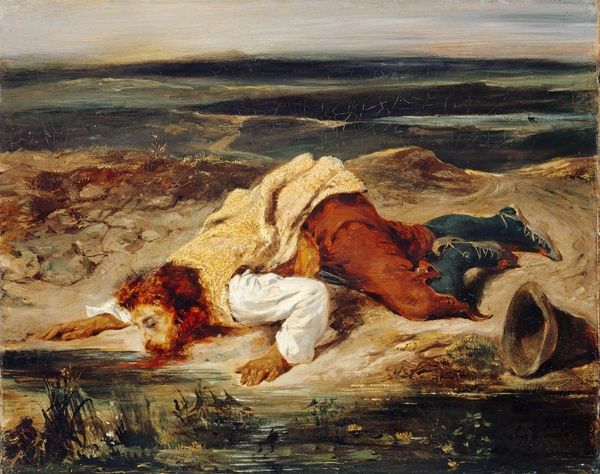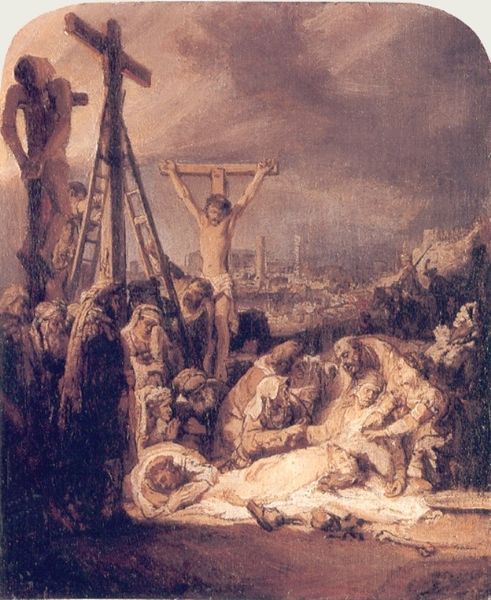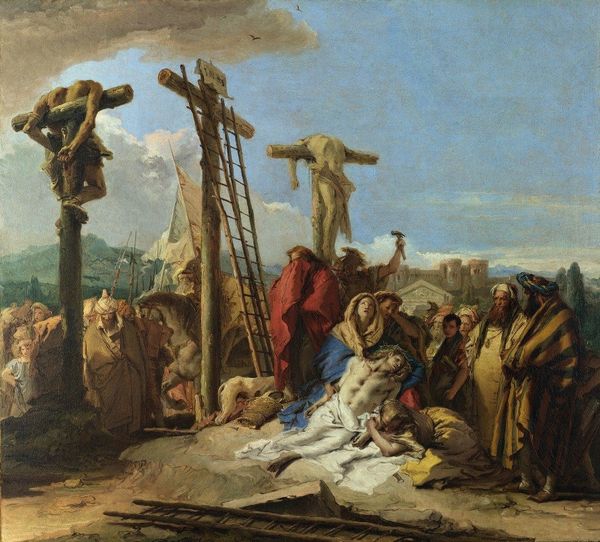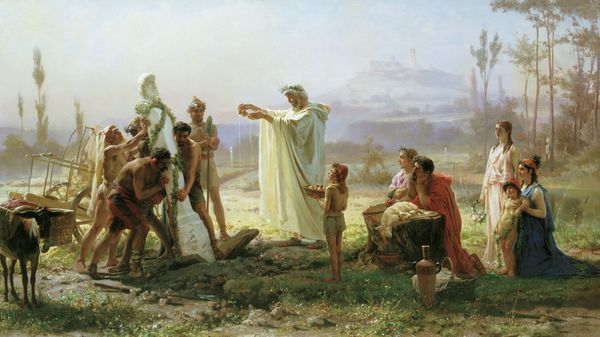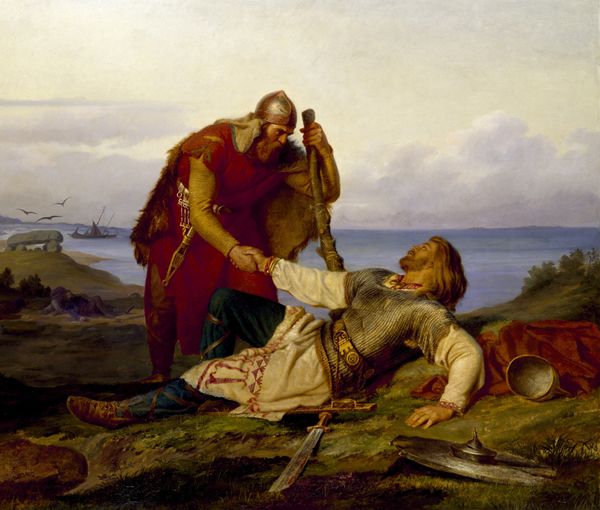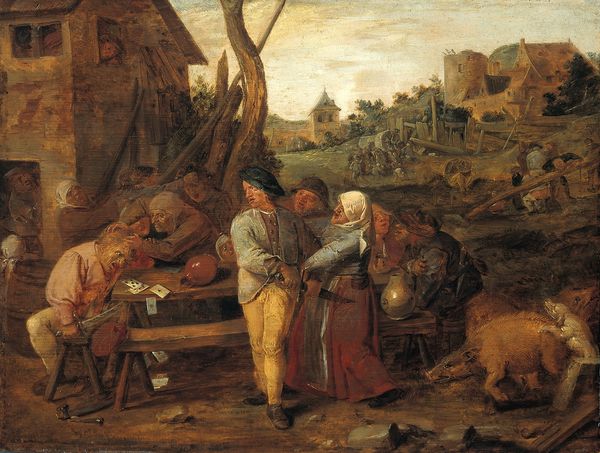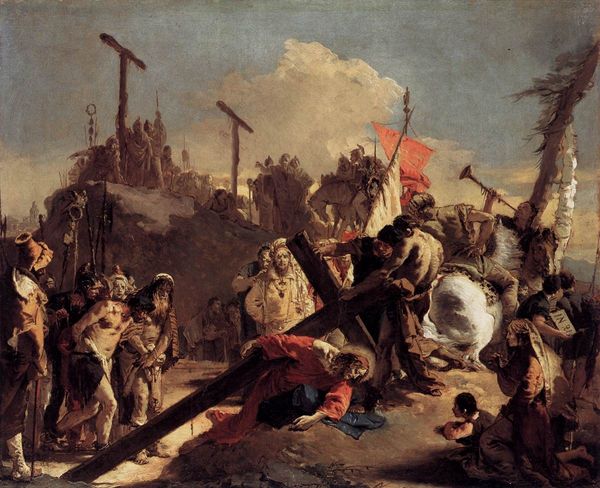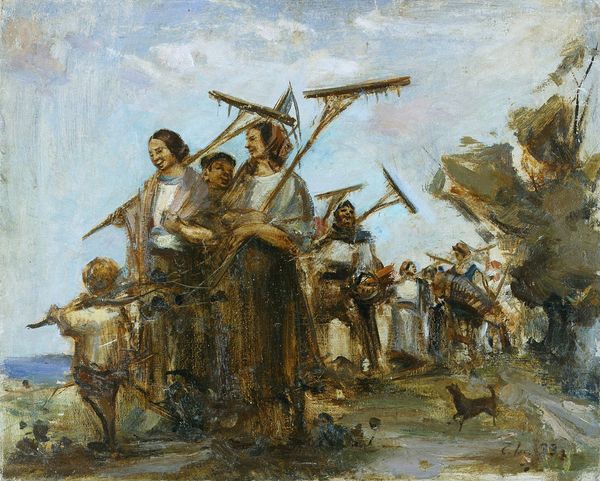
Cursed field. The place of execution in ancient Rome. Crucified slave 1878
0:00
0:00
Copyright: Public domain
Curator: Bronnikov's 1878 painting, "Cursed field. The place of execution in ancient Rome. Crucified slave", depicts exactly that: a desolate landscape dotted with crucifixes bearing the bodies of the condemned. Editor: My immediate reaction is one of stark bleakness. The scene is washed in muted colours, the land barren, the figures – both living and dead – convey such palpable suffering. The very material seems to carry that weight. Curator: The artist, through his Realist and Romanticist lens, certainly intends to elicit an emotional response, particularly one of horror and injustice at the systemic cruelty. It invites a dialogue about power and punishment throughout history. Consider also, how race and class invariably dictated who ended up on those crosses. Editor: Absolutely. And look at the actual brushwork! Bronnikov doesn't shy away from showing us the reality. There's an unflinching application of paint to render the twisted limbs and the crude wooden structures. The materiality is as crucial as the subject matter here. He exposes the mechanisms of state-sponsored violence. How this machinery chews and consumes bodies. Curator: We must consider the artist's social and political context, the themes that preoccupied intellectuals at the time. The abolitionist movement, the push for social justice – all resonate within this depiction of ancient Roman oppression. How does the art function as social critique then and now? Editor: Indeed, and while he renders a specific scene, the very composition guides the eye across a bleak terrain peppered with the signs of forced labour and control – the crosses themselves, raw in their construction, become part of a narrative centered around slavery and suppression across epochs and places. How they continue even into our present day… Curator: I agree. Its resonance lingers long after viewing, pushing us to examine contemporary forms of injustice and oppression. Editor: It forces you to confront a lineage of brutal mechanisms. Material becomes testimony, labor becomes the brand and proof.
Comments
No comments
Be the first to comment and join the conversation on the ultimate creative platform.

